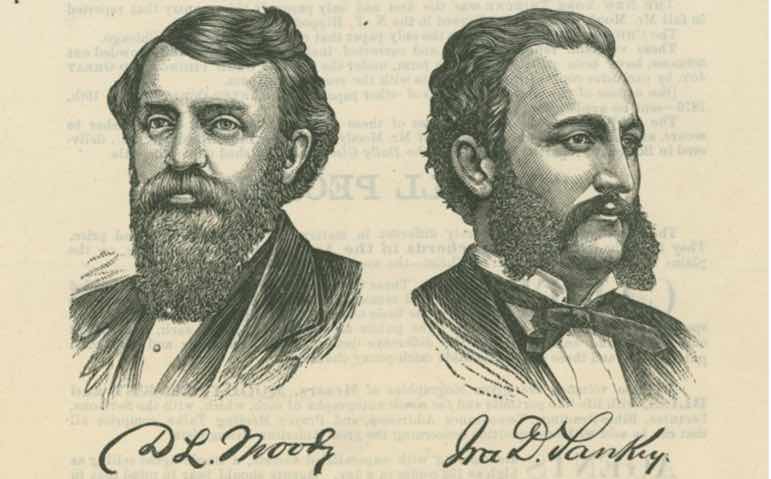Music and Evangelism
Rev. Tony Cooke
I recently completed a chapter entitled “Christ in the Hymns” for my upcoming book, Magnificent Jesus. I was deeply touched with how the Holy Spirit has impressed different songwriters, through the centuries, with profound revelation regarding the majesty and grandeur of Jesus.
In the writings of Paul, there are verses that are believed to be portions of early hymns, including Philippians 2:6-11, Colossians 1:15-20, and 1 Timothy 3:16. As I researched Christ-exalting hymns through the centuries, one source I drew from is 101 Hymn Stories by Kenneth W. Osbeck. He made the following observations about the power of the Word of God expressed through music.
“Historians have stated that Martin Luther won more converts to Christ through his encouragement of congregational singing than even through his strong preaching and teaching.”
“Of the Wesley’s it was said that for every person they won with their preaching, ten were won through their music.”
“D. L. Moody said, ‘Singing does at least as much as preaching to impress the Word of God upon people’s minds. Ever since God first called me, the importance of praised expressed in song has grown upon me.’”
We should not forget that Martin Luther’s great hymn, “A Mighty Fortress is our God” became the rallying cry for the Protestant Reformation. Luther stated, “I have no use for cranks who despise music, because it is a gift of God. Music drives away the Devil and makes people joyful; they forget thereby all wrath, unchastity, arrogance, and the like. Next after theology, I give to music the highest place and the greatest honor.”
The chapter in my book that I was doing the research for dealt primarily with worship, and of course, that is a major focus of many hymns throughout history, but I also found some excellent information about music being used as a tool for evangelism, and that is the focus on this article.

Some of the most powerful evangelistic teams of all time combined the preached Word and the Word in music. For example, Moody’s ministry was tremendously enhanced through the evangelistic singing of Ira Sankey. Osbeck also wrote:
“It was frequently said that Sankey was as effective a preacher of the gospel of salvation with songs as his associate, D. L. Moody, was with his sermons.”
A lady in Chicago spoke of Sankey’s ministry in song, saying, “Mr. Sankey sings with the conviction that souls are receiving Jesus between one note and the next…When you hear him you know of a truth that down in this corner, up in the gallery, behind that pillar which hides the singer’s face from the listener, the hand of Jesus has been finding this and that and yonder one, to place them in the fold.”
Sankey often stated, “This is music that is calculated to awaken the careless, to melt the hardened, and to guide inquiring souls to Jesus Christ.” Having heard Sankey sing in Scotland, the famed preacher said, “Well, Mr. Sankey, you sang the gospel tonight.”
One British newspaper wrote of Sankey:
“Mr. Moody is very fortunate in having such a colleague as Mr. Sankey. He has enriched evangelistic work by something approaching the discovery of a new power. He spoils the Egyptians of their finest music, and consecrates it to the service of the tabernacle. Music in his hands is, more than it has yet been, the handmaid of the gospel and the voice of the heart. We have seen many stirred and melted by his singing before a word had been spoken. Indeed, his singing is just a powerful, distinct, and heart-toned way of speaking, that seems often to reach the heart by a short cut, when mere speaking might lose the road.”
The Salvation Army
The Salvation Army, founded by William and Catherine Booth, also found music to be a powerful tool for evangelism. William Booth said, “Soul saving music is the music for me.” At an international congress which took place two years after William Booth’s death, the Salvation Army was found to have 1,674 brass bands (26,000 players) and 13,000 singers that were working in 56 different nations. They sang to reach the lost.
The Billy Graham Team
Likewise, Billy Graham enjoyed a multi-decade partnership with two great singers, Cliff Barrows and George Beverly Shea. Graham said that “Cliff Barrows has led more people in singing than any other man in the world.” He also said, “‘The remarkable contribution Cliff has made to my ministry cannot be measured in human terms. I love him like a brother.”
Of Shea, Graham said, “George Beverly Shea was one of my closest friends for nearly seventy years, and has been one of the dearest friends my wife, Ruth, and I have ever had.” As powerful as Graham’s preaching was, it was complimented powerfully by the song services led by Barrows and by the solo numbers performed by Shea. “Just As I Am” will forever be associated with the invitations given by Billy Graham.
In this short article, I’ve focused on one purpose, not the only purpose of music. Perhaps it is an aspect of music that needs to be revisited in our thinking. I’m 100% in favor of worshipping God through music, and I enjoy music that edifies the saints, encouraging hope and faith in the hearts of believers. But I’m wondering if there should be more emphasis on evangelizing the lost and even promoting missions work through music. So many songs today are about God giving us (the already saved) blessing and victory, and that’s great. But don’t we need more songs that do what Sankey said? Songs that are “calculated to awaken the careless, to melt the hardened, and to guide inquiring souls to Jesus Christ.”
In 1890, Charles Gabriel wrote, “Send the Light.” Some of the words include:
There are souls to rescue, there are souls to save,
Send the light!
Send the light!
Send the light, the blessed gospel light,
Let it shine from shore to shore!
Send the light the blessed gospel light,
Let it shine forevermore.
We have heard the Macedonian call today,
Send the light! Send the light!
And a golden offering at the cross we lay,
Send the light! Send the light!
In closing, let me share with you a link to a powerful song that my daughter, Laura, wrote during her ORU years entitled “Until the Whole World Knows.”


